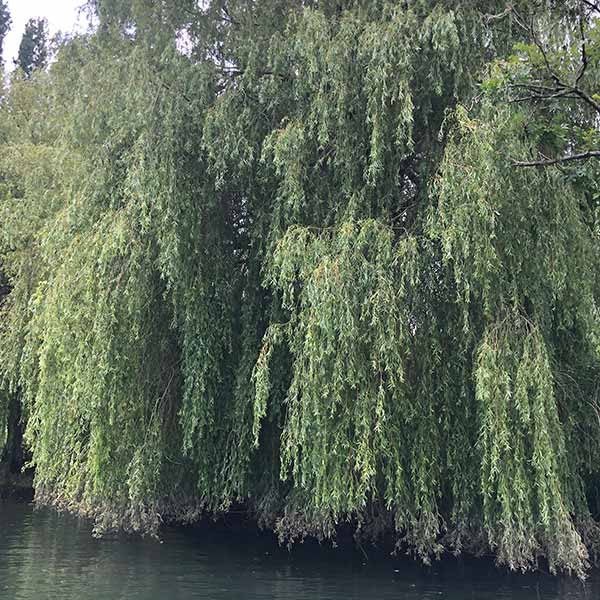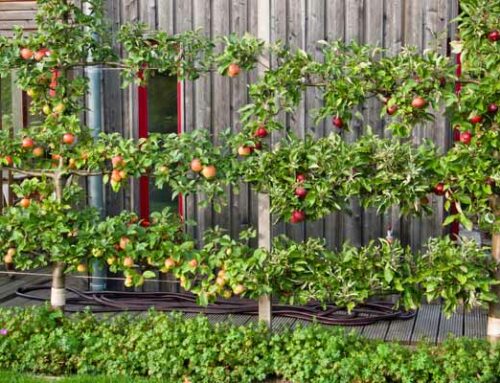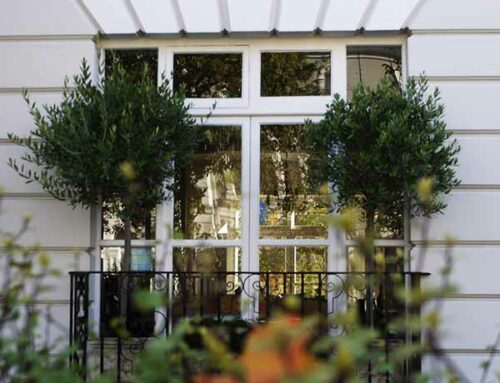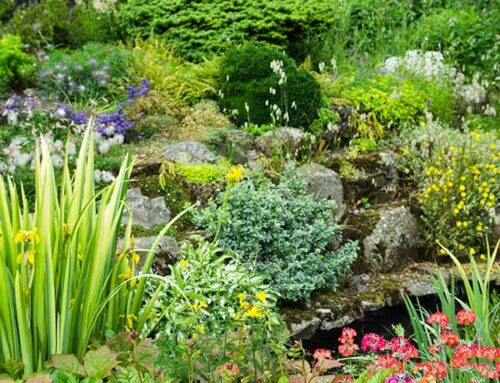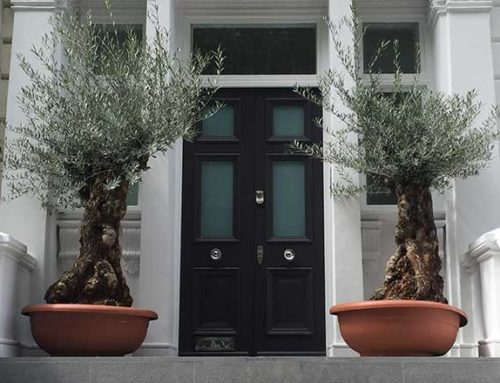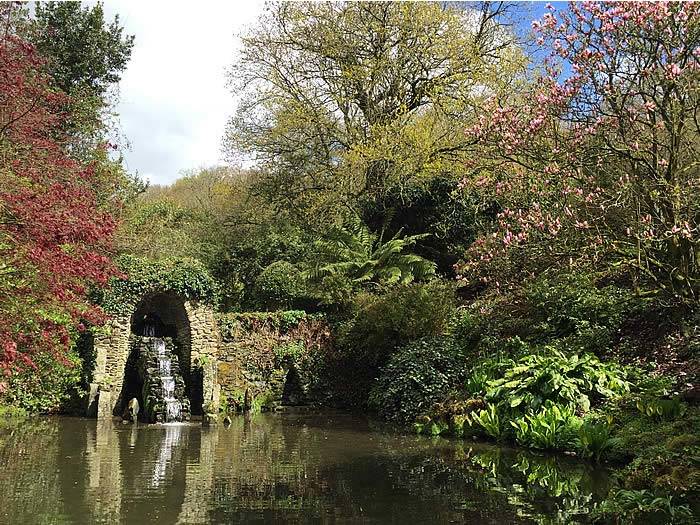
Choosing the ideal tree varieties for your garden can be a challenging task, especially if your conditions are less than perfect. A common issue gardeners face is wet areas or sites on their property or overall wet and boggy soil in the garden. Parts of your garden with poor drainage or standing water after rains might seem impossible to populate with plants or, at least, those plants you would like to cultivate yourself. Alternatively, you might also have a stream going through your property and wonder which trees are a good choice to plant near water.
Wet or clay soil in the garden can make matters more difficult for a gardener looking to have a diverse, thriving flora. Soggy soil limits your choice of suitable trees and plants, as most trees dislike wet, overly moist soils. Their roots can literally suffocate in wet soils, leading to the death of the tree itself with time. Too much water in the soil saturates the air spaces, resulting in less oxygen in the ground. Oxygen is a necessity for a healthy tree. Waterlogged soil can be fixed, in some cases, with gypsite or by improving drainage with sand, compost and other soil-enriching methods that work to better the soil structure. But in most cases, tangible improvement of wet, soggy soil is not a viable solution.
So, let’s look at the options for trees for wet areas. There are various striking trees to plant in wet areas that will not only tolerate the dampness of the site but thrive in such conditions. In fact, some of the popular trees for wet areas have also been known to improve the soil structure of the site they are planted in, soaking up the excess water in the area and “firming up” erosion-prone soil. The most common water-loving trees people use for soggy gardens or wet sites are weeping willows and river birches, or alder and poplar varieties. These genera of trees prefer wet, moist, and damp conditions and offer you plenty of landscaping choices for various garden styles, from architectural to cottage. To learn about the differing characteristics and features of these trees for wet areas, take a look at the list below. This will help you decide which water-loving trees are best for your situation.
Best Trees for Wet Areas and Planting Near Water
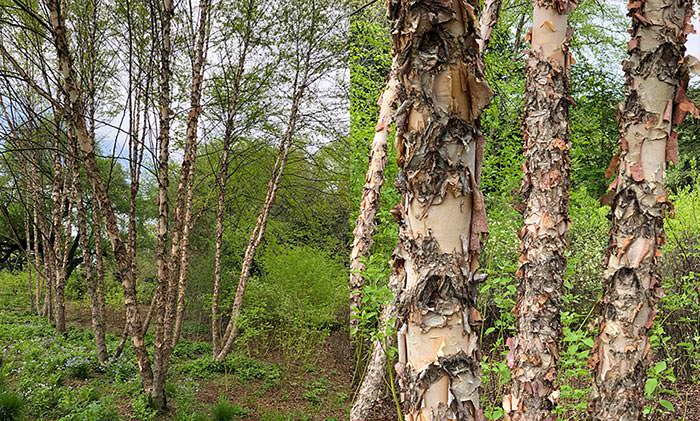
Betula Nigra – River Birch Tree
As the name suggests, this deciduous tree was originally found growing along river banks, all over the central and eastern parts of the United States. The bronze coloured bark is one of its most distinct assets, as the peeling, textured bark of the trunk offers interest throughout the year. The diamond-shaped, serrated leaves start out as a vibrant green, only to turn to a vivid golden yellow in the autumn, before revealing bare branches and eye-catching bark in the winter. In addition to being one of the rare birch varieties that does not mind waterlogged soil, river birch is also resistant to drought at the same time, as well as deer, and air pollution. Betula Nigra has an expected height of 8 to 12 metres in maturity. Does well in a sunny spot or dappled shade. Other varieties of river birch include River Birch Summer Cascade, or the variegated Shiloh Splash River Birch (which can also be grown as a shrub).
Populus Tremula – Quaking Aspen Tree
A European native, this fast-growing broadleaf deciduous aspen tree earned its name because of the movement its foliage makes in the wind, giving the impression that the tree trembles with the gusts of wind. The unique quaking foliage of Populus Tremula emerges copper, before maturing to fresh green and ultimately transforming to vivid yellow and reddish in the autumn. Quaking Aspen also produces attractive catkins that remain on the tree for the better part of the year. A truly eye-catching addition to the landscape, this is a fairly large deciduous tree that will grow to be around 25 metres high with a canopy wider than 10 metres, so consider this when choosing a planting site. Happy both in partial shade and full sun.
Populus Tremula Erecta – Swedish Aspen
This RHS AGM aspen variety is popular for its impressive narrowly columnar habit. While it can be planted singularly, the fastigiate habit of Swedish Aspen offers architectural and structural value, which is why it works best when it is planted en masse. This tree is often used to line avenues or serve as an elegant hedge. The trembling deciduous heart-shaped foliage is at its best during autumn, when it takes on the hues of gold, red and orange, creating a splendid seasonal display. The narrow form (usually no wider than 3 metres) makes this cultivar a good choice for small and big gardens alike. Expected height is around 8 to 12 metres. For best results, plant in full sun.
Alnus Glutinosa – Common Alder (Multi Stem)
While common alder is naturally a small bushy tree with a columnar habit, our specimens are trained as multi-stemmed trees. This form makes it not only more decorative but also more suited for screening purposes or for use as a specimen tree. The most attractive features of this robust cultivar are its sticky young growth and drooping yellow catkins that mature into winged seeds. The average height of this deciduous tree is over 12 metres with a spread of 4 to 8 metres. A truly tough cultivar, common alder adapts to a range of conditions, from wet soils to drought, and will thrive in a sunny location.
Salix Alba – White Willow Tree
No lists of trees to plant in wet areas would be complete without the Salix genus. These striking trees come in many forms and varieties, but they all share one common trait – their love of wet areas. The white willow boasts narrow pointed leaves that appear silvery white from a distance (hence the name) but are actually bluish green. Salix Alba is a fast-growing deciduous tree that will require a lot of space to be comfortable, as its expected size is over 25 metres in height and with a spread of well over 10 metres, once the tree is fully mature. Pick a location in full sun to make sure this willow tree thrives.
Salix Sepulcralis Chrysocoma – Golden Weeping Willow
The sight of a weeping willow near a river, stream, or a lake is so iconic that many first think of these cultivars when asked about trees for wet areas. And, needless to say, weeping willow varieties truly are ideally suited for planting near water or in soggy soil. The Golden Weeping Willow is an RHS AGM variety that is prized both for its hardiness and decorative value. The pendulous branches are adorned with foliage that goes through several shades of golden yellow from spring to the end of autumn, earning this weeping willow its name. Ideal as a specimen tree for large gardens, this cultivar will grow to be up to 15 metres tall and wide. Choose a sunny spot for best results.

